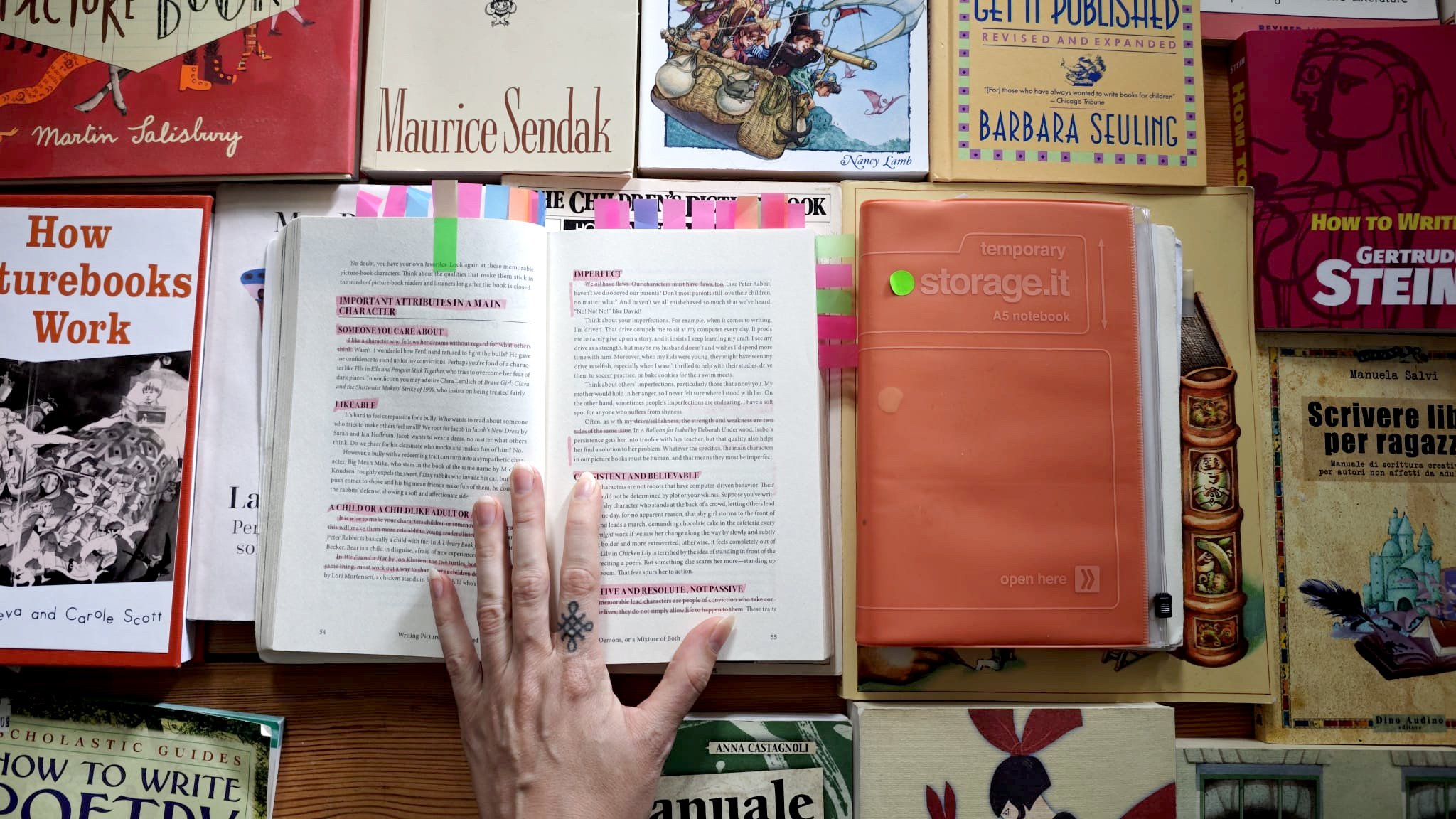New Chapter: Representation, Storytelling and Picturebooks
I'm thrilled to share that I’m now officially represented by Lori Steel at Steelworks Literary! Lori will be my agent for picture books and children’s publishing worldwide. Finding an agent who truly believes in your work is a huge milestone, and I’m so grateful to have connected with someone who understands and supports my vision.
These past few months, I’ve been focused on refreshing my kidlit portfolio and working with more intention toward a goal that’s very close to my heart: developing and publishing my own picture book stories. This representation is a meaningful step in that direction and so is the work I’ve been doing behind the scenes to strengthen my storytelling skills.
Since last December, I’ve been self-studying the craft of writing, especially picture book structure — both in terms of story arc and the physical structure of the book itself.
So what does self-study look like for me?
Here are a few things that have been incredibly helpful:
• Reading craft books specifically focused on picture books
• Studying story structure and narrative techniques
• Reading lots and lots of illustrated books — both classics and new releases
• Taking part in writing workshops or webinars led by experienced authors
• Being part of a critique group where we regularly share and review each other’s stories
All of these steps have helped me grow not just as an illustrator, but as a storyteller and I’m so excited to see where this path leads.
As part of this journey, I’ve been building a personal library of books about writing and illustrating for children.
Some of these books I read years ago, others I’m studying right now, and a few are on my to-read list. They’ve all helped (or are helping) me better understand the picture book world, from story structure and page turns to language, rhythm, and visual storytelling.
• 100 Great Children's Picture Books – Martin Salisbury
• Caldecott & Co.: Notes on Books and Pictures – Maurice Sendak
• The Writer’s Guide to Crafting Stories for Children – Nancy Lamb
• How to Write a Children's Book and Get It Published – Barbara Seuling
• The Way to Write for Children – Joan Aiken
• How Picturebooks Work – Maria Nikolajeva & Carole Scott
• La porta segreta: Perché i libri per bambini sono così affascinanti – Mac Barnett
• The Children's Picture Book: How to Write It, How to Sell It – Ellen E.M. Roberts
• Writing with Pictures: How to Write and Illustrate Children's Books – Uri Shulevitz
• How to Write – Gertrude Stein
• Scrivere libri per ragazzi – Annamaria Piccione
• The Ode Less Travelled – Stephen Fry
• How to Write Poetry – Paul B. Janeczko (Scholastic Guide)
• Writing Picture Books – Ann Whitford Paul
• Manuale dell’illustratore – Anna Castagnoli
• Guardare le figure – Antonio Fatti
• Ad occhi aperti – a cura di Hamelin
• Hamelin 40 – Albi, autori, linguaggi – Rivista Hamelin
Out of all the books I’ve read so far, one that truly gave me a push forward is Writing Picture Books by Ann Whitford Paul. It’s incredibly practical, each chapter includes writing exercises that help you apply what you’re learning right away.
Right now, I’m focusing on reading and studying the theory, but I plan to go back through the book and complete every chapter exercise step by step. It’s become a cornerstone of my self-study process.
I’ve also found workshops to be a great source of insight and encouragement. Two that really stood out were:
• A workshop with Jarvis, Storytime with Jarvis: Let’s Write a Children’s Picture Book Zoom workshop.
• A session by Orange beak Studio with Industry Insights talk led by Naomi Kirsten
One tool I’ve created that has really helped me is a character development sheet. Having a clearly defined character makes it so much easier to shape the story, you naturally begin to understand how they would behave, speak, and react in different situations. It becomes easier to write with consistency and depth, and it helps the story unfold more organically around the character’s unique personality. If you're developing your own stories, I highly recommend trying this kind of worksheet. Sometimes, knowing your character really well is the key that unlocks the entire plot.
I hope these little tips and discoveries might be helpful to some of you, too. And I’d truly love to hear from you, especially if you have any book recommendations about writing for children, particularly in Italian.
It’s not easy to find up-to-date resources focused specifically on picture book writing in Italian. Most books I’ve found either cover general storytelling or focus more on illustration than writing. So if you know of any useful reads, feel free to share. I’m always eager to learn more!





